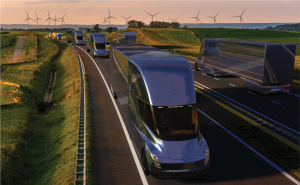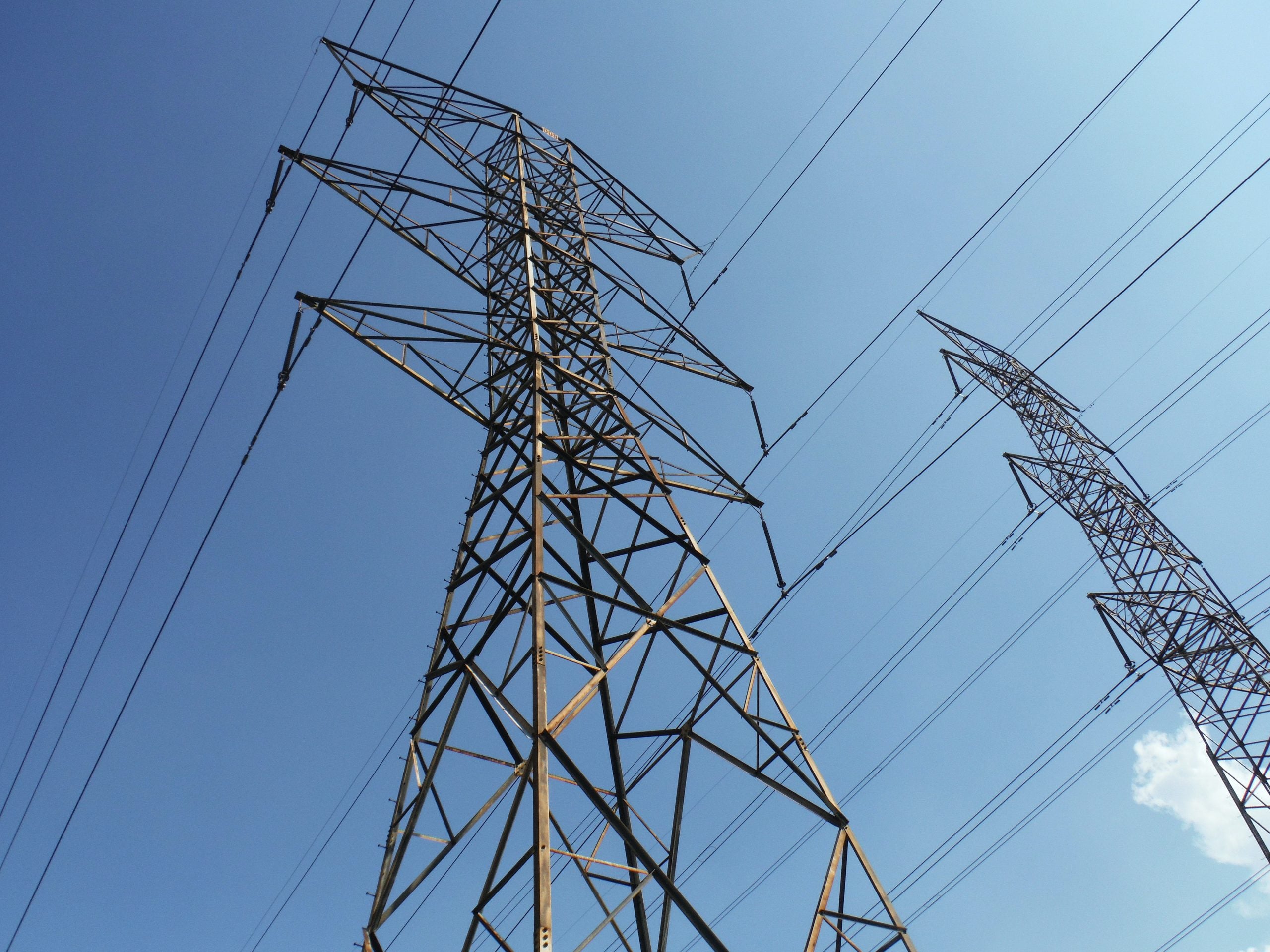
The scoop on the Scoping Plan: CARB is not on track to achieve a zero-emission transportation sector (Part 4)
This post was co-authored by Sam Becker, Electric Medium- and Heavy-Duty Vehicle Advocate, and Lauren Navarro, Senior Manager, Regulatory and Legislative Affairs.
In May, the California Air Resources Board released the draft 2022 Climate Change Scoping Plan, a roadmap that will guide the state toward meeting its 2030 emissions target and achieving net-zero emissions no later than 2045. This four-part series will unpack several key aspects of the plan and evaluate whether they raise California’s climate ambition to the levels needed to protect communities from the worst climate impacts.
CARB’s draft Scoping Plan represents a significant opportunity for the state to reassess its methods for reducing climate and air pollution from the transportation sector. The recently released draft, however, undermines the state’s efforts to achieve a key climate goal outlined in Gov. Newsom’s executive order, which calls for 100% of medium- and heavy-duty trucks on the road to be zero-emission vehicles by 2045 everywhere feasible.
Statewide, about 12 million Californians live in communities that exceed the federal ozone or PM2.5 standards. Transportation generates nearly half of the state’s climate pollution and is the state’s largest producer of health-harming nitrogen oxide emissions and toxic diesel particulate pollution.
To chart an equity-focused path toward achieving net-zero emissions and ensure needed near-term ambition in the transportation sector, CARB’s Scoping Plan must rapidly eliminate emissions from the transportation sector by attaining 100% MHD ZEV sales by 2035.
Establish a realistic and robust path for a zero-emission transportation sector
Medium- and heavy-duty vehicles make up just 6% of vehicles on the road, but they produce 72% of health-harming Nitrogen Oxide emissions and 21% of greenhouse gas emissions from the on-road transportation sector. EDF researchers found that communities of color are far more burdened by this pollution than white communities are. For example, up to one in two new childhood cases of asthma in west and downtown Oakland, where more than 70% of the population are people of color, were caused by traffic-related air pollution while that number was about one in five for children in an Oakland Hills neighborhood, where more than 70% of the population is white.
Unfortunately, CARB’s Scoping Plan draft falls short of reaching 100% MHD ZEVs on the road by 2045 everywhere feasible and for all drayage trucks to be zero-emission by 2035, as described in Gov. Newsom’s recent executive order. And it also appears to obstruct CARB from taking a sufficiently ambitious approach in its Advanced Clean Fleets rulemaking process, which could strengthen the state’s sales requirement for MHD ZEVs. Instead, the draft Scoping Plan sets a requirement that would, according to CARB’s own analysis, result in just 50% of the MHD vehicles on the road in 2045 as zero-emissions vehicles, when we are supposed to have 100% ZEVs on the road. Even in 2050, a third of these vehicles will continue spewing harmful pollutants.
To address this unacceptable shortfall, CARB must set a more ambitious 2035 100% MHD ZEV sales requirement. CARB’s own analysis and the latest technology reports imply a 2035 100% ZEV sales requirement for MHD vehicles is feasible and cost effective. A recent report even shows that MHD ZEVs will become less expensive to purchase and operate than their combustion engine counterparts by 2027.
Yet, rather than using the plan to ensure Gov. Newsom’s goals are met, the plan appears to be limiting what can be achieved by the ACF rule, which has yet to be adopted, by saying that it (and any future strengthening of the Advanced Clean Trucks rule) should align invariably with the Scoping Plan. Rather than limit CARB’s ambition, CARB should use the plan to promote ambition in its MHD ZEV truck rules. Thus, the Scoping Plan should require 100% ZEV sales by 2035.
Financing the change
The Scoping Plan draft highlights the importance of funding for small businesses and pollution-burdened communities, but doesn’t discuss how to leverage and deploy the needed financing. SB 372 by state Sen. Leyva gives CARB the power to set up a broad array of financing tools and other support mechanisms to meet the needs of diverse fleets acquiring ZEV trucks, with 75% of funds going to underserved communities. When applicable, these programs are designed to draw in private capital to help cover a greater portion of the transition than the state can alone, for example, with larger fleets. We recommend utilizing this law in the plan to support small truckers and enable larger fleets to play a big role in financing in the solution.
Strong ZEV standards are good for the economy
According to analysis done at the time of the ACT Rule, strong ZEV standards are good for the economy. CARB estimated the ACT will yield almost $6 billion in direct savings for the trucking industry — these economic benefits were corroborated by Energy Innovation analysis. These direct savings accrue mostly from lower fueling and maintenance costs due to the switch away from fossil fuel-powered engines, with total cost of ownership savings more than compensating for higher upfront vehicle and infrastructure costs.
Installing electric truck charging infrastructure will also put thousands of people to work in the early years of the rule, and support our local ZEV manufacturers. These direct economic benefits are in addition to indirect economic benefits of nearly $9 billion in California from 2020 through 2040 related to avoided health impacts, according to CARB staff’s analysis.
Zero-Emission trucks are ready
There are already many zero-emission options for fleets, and the number of models available is rapidly growing, expanding by 26% over the past two years. Fleets large and small are embracing these vehicles. EDF has identified over 180 fleets that are operating at least one ZEV today or have one on order. A recent report says that half of heavy-duty regional haul tractors are electrifiable today. This will rapidly grow as more and more vehicles capable for all use cases are produced in the coming years. The vehicle availability indicates that the market is ready for significant ZEV deployment, and the Scoping Plan should give the guidance and commitment to the market to increase ambition.
Achieve more, regret less
While the draft Scoping Plan puts an important focus on transportation, especially its focus on interagency coordination and ZEVs, the plan’s success depends on CARB’s commitment to clean MHD ZEVs that will generate lifetime cost-savings and significantly curb harmful air pollution. Specifically, CARB needs to establish a target of 100% MHD ZEV sales by 2035, a feasible and substantially cost-saving goal. In addition to this requirement, an innovative funding plan — like the one set forth in SB 372– and other ambitious policies will enable us to achieve 100% zero-emission medium- and heavy-duty trucks on the road by 2045.
Where the Scoping Plan should go from here
In the past few weeks, we’ve analyzed four key aspects of California’s draft Scoping Plan: the state’s cap on emissions (Part 1), the electric power sector (Part 2), emerging solutions (Part 3) and the transportation sector (Part 4). In each of those pieces, there is clear room for improvement where California can ramp up ambition this decade and secure critical cuts in pollution — rather than delaying targets or down-playing proven policies and solutions. As CARB finalizes the plan over this year, it must harness those opportunities go bold now, so that California’s era of climate leadership will confidently continue during this mission-critical decade. Other state, national and global leaders will be watching.













One Comment
It’s key to understand where the push back comes from to reach 100% EV truck adoption. Truck companies have had to upgrade their vehicles to meet CARB standards at a faster pace than they can amortize the cost. Going EV is a major transformation for which they have no practical solutions. Where are the truck charging stations? Are there enough for all trucks? How much will it cost to charge? These are real world operational concerns that need to be addressed before truckers agree to switch. Trucking companies must all be outfitted with charging stations, ports needs perhaps 100 to 200 charging stations each, to serve the double purpose of removing truck congestion waiting to load/unload and charging while waiting. These infrastructures must be built before the switch to electric, and the cost should be shared by city, port, employers, county and state. The cost of the EV trucks need to be subsidized by the State and local governments who stand to gain from clean air in zones that to date are low income areas, but could become choice property devwlopments in front of ocean or Bay views. All port equipment should be required to transition to electric power at the same pace as on the road truckers. The shipping lines and other port operators have been registering enormous profits over the last 3 years and should be required to accelerate their EV transformation.
Eliminating ICE trucks from the road and ports will not only eliminate atmospheric pollution, but also drastically reduce noise pollution as well. West Oakland, for example, could see the revival that so many mayors and state actors have dreamed of over the years. The entire zone could be slated for redevelopment to benefit existing owners and low income tenants and newcomers tu make west Oakland the most sought after area of Oakland with its Bay views and easy freeway access and, perhaps, it’s new stadium.